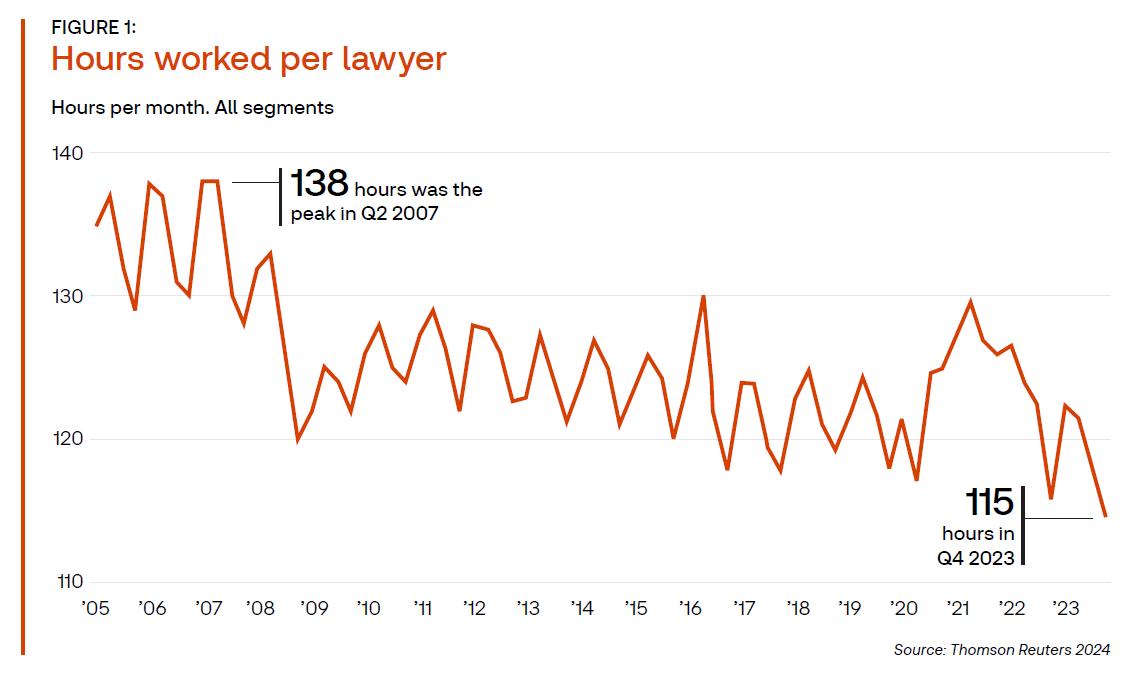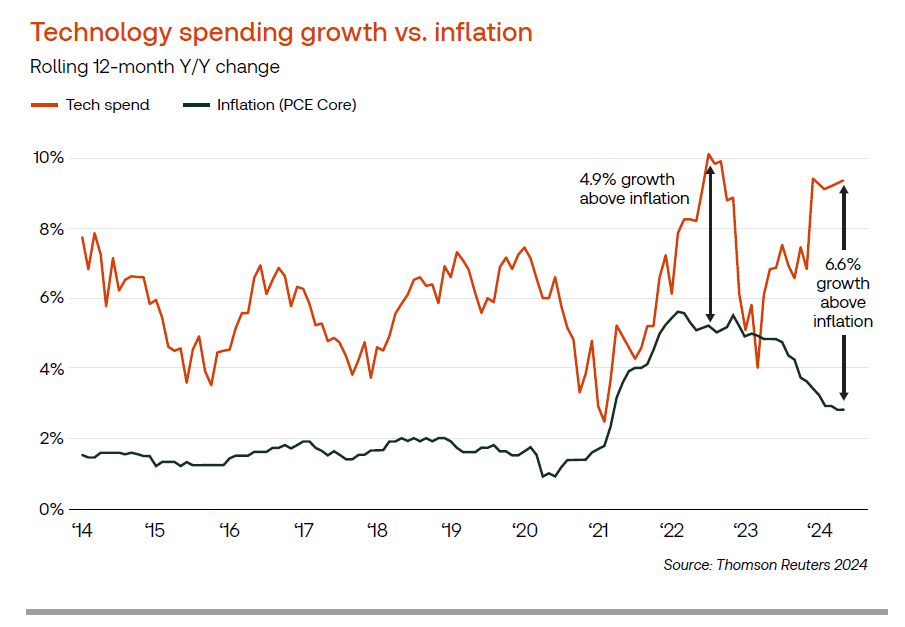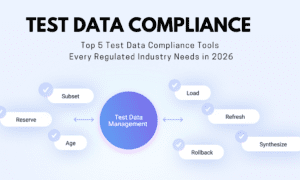Time is money in all industries, and legal organizations are no exception. From complying with regulations to mitigating risks and making strategic decisions, these organizations always need to keep up with the ticking clock.
Yet, many organizations remain bogged down by legacy systems that require excessive manual intervention, delay critical reports, and inflate IT maintenance costs.
Legal teams spend countless hours searching for case files, compiling compliance data, and navigating fragmented systems—a recipe for increased operational overhead and missed deadlines.
However, technological advancements pose promises to these inefficiencies—eliminating bottlenecks to allow legal professionals to shift their focus to delivering their expertise.
My name is Jeganraja Rajamani, and I am a senior data engineer. I’ll tell you a story of transformation—one that explores how migrating data pipelines to the cloud revolutionized an organization’s operations, resulting in a smarter, more agile, and empowered workforce and a cost-effective future.
The Challenge: Navigating Legacy System Limitations
Legal organizations traditionally rely on legacy systems—outdated software and hardware that remains integral to daily operations despite being obsolete.
While these systems may have been effective in the past, legacy systems present significant challenges in the modern legal landscape, such as:
High Maintenance Costs
Maintaining legacy systems can be more expensive than investing in modern solutions. Why?
It’s because providers often stop support for outdated systems, leading firms to spend more to address issues, implement band-aid solutions, and continuously monitor and maintain these systems.
Security Vulnerabilities

Year on Year Difference of Average Data Breach Cost (Source: UpGuard)
Legal organizations need secure systems for their data, which legacy systems may not provide in modern times.
Lack of security makes these systems susceptible to cyberattacks, which present risks to legal organizations through data breaches and hacking.
Integration Challenges
Businesses and organizations use connected systems to ensure smooth operations—something that legacy systems cannot guarantee.
As these are outdated, these systems may not be compatible with new technologies, hindering organizations from integrating them with advanced tools to enhance efficiency and productivity. This incompatibility can lead to fragmented workflows and data silos, further complicating operations.
Operational Inefficiencies

Hours Worked per Lawyer (Source: Thomson Reuters)
Legal professionals may spend excessive time navigating cumbersome interfaces and performing manual data entry, diverting attention from more strategic tasks.
This inefficiency can lead to increased operational overhead and reduced responsiveness to client needs.
Addressing these challenges and limitations is extremely important if legal organizations want to remain compliant and competitive in today’s legal landscape.
The Solution: Strategically Migrating to Cloud-Based Data Pipelines
In the fast-paced world of legal operations, delayed data access and fragmented workflows result in significant operational inefficiencies.
However, cloud-based data pipelines offer a strategic solution, allowing legal teams to focus on high-value work instead of managing outdated infrastructure.
Let’s look at what solutions this migration can offer.
1) Consolidating Data for a Single Source of Truth
Legal organizations often store critical data across multiple systems, making retrieval slow and prone to errors.
Migrating to cloud solutions and implementing a centralized legal data warehouse enables firms to consolidate all legal data into a single, easily accessible repository.
At Amazon Legal Technologies, my team developed an automated data pipeline that seamlessly transferred legal-related data, including contracts, approvals, compliance documents, litigation records, and more, into a unified cloud-based data warehouse. This pipeline reduced report generation time from 24 hours to under 1 hour, providing teams access to legal data whenever needed.
2) Automating Data Transformation and Processing
Traditional legal operations rely heavily on manual data entry and transformation, consuming 40% of a legal team’s time.
With AWS Glue or Kinesis Firehose, we can automate this process by cleaning, structuring, and streaming legal data in real-time.
Before automation, Amazon’s legal engineers spent 40 hours setting up each data transfer pipeline. With our AWS—powered automated pipeline solution, we cut this process to just 15 minutes. This impressive 99.4% efficiency improvement enables the legal team to process 200% more data requests per quarter.
3) Enhancing Security and Compliance with Cloud-First Protection
With data breaches costing businesses millions, legal organizations must prioritize security. AWS solutions provide multi-layer security, encryption, and access controls to protect sensitive case files and client data.
As I recognized security vulnerabilities in legacy systems, I architected a secured data pipeline that enhanced access controls and encryption.
This solution ensured:
- 100% data accuracy
- Near-real-time reporting of all legal related data.
4) Accelerating Legal Workflows and Decision-Making
Slow approval cycles hinder legal operations, delaying contracts, investigations, and compliance audits.
Cloud-based workflow automation reduces approval times, allowing legal teams to respond 2 to 3 times faster.
For example, integrating DynamoDB and AWS Redshift at Amazon reduced the approval cycle for legal transactions—from 5 to 7 business days to just 1 to 2 days. This enabled faster litigation support, contract approvals, and compliance monitoring across the company’s legal operations.
The Transformation: Tangible Benefits and Operational Improvements
When I moved from the retail industry to the legal sector, I saw these challenges emerge and knew I had to address them.
Using my experience in cloud computing and machine learning, I addressed these limitations, enabling legal organizations to remain competitive and compliant in today’s digital world.
We can do that by embracing modern technologies that mitigate risks and unlock new opportunities for growth and innovation.
When we migrate data pipelines to the cloud, we can usher significant benefits to these organizations, such as the following.
Enhanced Security and Compliance
Cloud-based solutions offer robust security measures to protect sensitive legal data. These measures include:
- Advanced encryption
- Continuous monitoring.
This shift to the cloud safeguards client information and helps firms adhere to stringent compliance requirements.
Cost Savings and Financial Efficiency

Technology Spending in Law Firms vs. Inflation (Source: Thomson Reuters)
In addition to security, transitioning to the cloud eliminates the need for costly on-premise servers, reducing software licensing, maintenance, and upgrade expenses.
I led a cloud migration initiative at Amazon Legal Technologies that automated legal data pipelines. This initiative reduced pipeline setup time from 40 hours to 15 minutes—a 99.4% efficiency gain.
Before migration, manual data transfers consumed over 4,000 engineering hours annually.
Leveraging AWS services like Glue, S3, and Redshift enabled us to cut engineering overhead and boost data transfer capacity by 200%, enabling faster reporting and legal decision-making.
This transformation underscores how cloud migration eliminates inefficiencies and reduces operational expenses in legal organizations.
Scalability and Flexibility
Migrating data pipelines to the cloud offers legal organizations unparalleled scalability and flexibility, enabling swift adaptation to evolving demands and optimization of resource utilization.
With cloud computing, they can adjust IT resources in response to fluctuating workloads without undergoing costly and time-consuming infrastructure upgrades. This dynamic scalability ensures optimal application performance during peak times and prevents resource wastage during off-peak periods.
Additionally, the cloud has inherent flexibility—facilitating efficient and adaptable document storage, collaboration, and data access solutions. This flexibility enables legal professionals to work from various locations and devices, supporting diverse work environments and enhancing cooperation among team members.
When we migrated legal data pipelines to AWS, we saw a 200% increase in data transfer capacity. This enhancement enabled organizations to handle more legal data requests efficiently, demonstrating the cloud’s ability to scale operations effectively.
Embracing cloud technology can significantly improve scalability and flexibility for legal organizations, positioning them to meet future challenges and opportunities effectively.
Enhanced Collaboration
As a Senior Data Engineer leading multiple projects across different departments, I know how important it is to communicate and collaborate with your colleagues and subordinates.
It’s the same for legal organizations—they communicate with lawyers, paralegals, compliance officers, and external counsel to review contracts, prepare litigation materials, and assess regulatory compliance.
However, legacy systems limit real-time collaboration, leading to delays in case preparations, errors, and inefficiencies in document management.

Biggest Technology Challenges when Collaborating between Internal and External Teams (Source: Association of Corporate Counsel)
When we adopted cloud-based platforms, we enabled teams to work together in real-time, regardless of physical locations, to ensure that workflows remained uninterrupted.
Implementing AWS-based legal data pipelines ensured compliance teams, investigators, and external legal partners could securely access and analyze legal data in real-time. This migration resulted in:
- Faster case resolution
- Improved audit response times
- Better risk management.
In short, cloud technologies transform how legal organizations within and outside the organization, a necessity in today’s fast-moving legal landscape.
Increased Operational Efficiency
The most crucial benefit legal organizations gain from migrating data pipelines to the cloud is increased operational efficiency. Why?
That’s because this technology streamlines processes and reduces manual workloads.
For example, cloud-based solutions automate tasks like document management and data entry. These solutions can reduce the potential for human error, freeing up valuable time for legal professionals to focus on more strategic activities.
Let’s say a law firm migrated its IT environment to the cloud. This migration will improve the firm’s productivity, as the new network design facilitates better management of systems and resources.
I led another project to implement automated real-time data pipelines for compliance reporting. Previously, teams generated monthly reports manually, which resource constraints limited to monthly updates. By implementing a cloud-based system, we enabled instant access to compliance data. This automation eliminated manual reporting delays, reducing report generation time from monthly to real-time. The new system allowed teams to address issues proactively rather than reactively.
And we saw significant improvements, such as:
- Shifting from monthly manual reporting to real-time compliance monitoring.
- Faster decision-making for risk assessment and policy enforcement.
- Increased operational efficiency across HR and legal teams.
The Result: Reducing Operational Overhead

Cost Control Strategies in Law Firms (Source: Thomson Reuters)
But how do these benefits and operational improvements affect operational overhead in legal organizations? Let’s break them down below.
- Automation of Data Workflows: Cloud-based ETL (Extract, Transform, Load) tools streamline data processing, reducing manual intervention.
- Real-time Data Access: Cloud services like Kinesis streams, Glue, S3, Redshift enable instant retrieval of Legal data.
- Cost-Effective Scalability: These platforms allow legal organizations to scale up or down based on demand, avoiding expensive infrastructure investments.
- Enhanced Security and Compliance: Cloud solutions’ robust security measures enable tighter security, preventing risks and costly mistakes.
- Reduced IT Overhead: These solutions eliminate the need to maintain physical servers and complex IT infrastructure.
- Faster Reporting and Insights: Cloud analytics tools enable legal teams to generate reports in minutes instead of hours or days.
In short, leveraging the cloud enables legal organizations to position themselves for long-term success.
Embracing the Cloud for a Smarter Legal Future
The legal industry continues to evolve, and cloud technology is no longer optional for them—it’s a necessity.
Through my work at Amazon Legal Technologies, I’ve seen firsthand how automated data pipelines can transform legal operations, reducing report generation from 24 hours to under an hour, cutting approval cycles from a week to just 1 to 2 days.
By migrating to the cloud, legal organizations gain real-time data access, enhanced security, and scalable efficiency, freeing teams to focus on strategic decision-making rather than manual processes.
Indeed, the future of legal tech is here, and it’s clear—those who embrace cloud innovation will lead, while others risk falling behind.
References:
American Bar Association. (2024). A guide for migrating on-premise legal tech to cloud-based solutions. https://www.americanbar.org/groups/law_practice/resources/law-technology-today/2024/a-guide-for-migrating-on-premise-legal-tech-to-cloud-based-solutions/
Ace Cloud Hosting. (2024, September 19). Cloud in legal industry: Top 5 benefits and use cases. https://www.acecloudhosting.com/blog/cloud-in-legal-industry/
BairesDev. (n.d.). Problems with legacy systems. https://www.bairesdev.com/blog/problems-with-legacy-systems/
Fahmideh, M., Daneshgar, F., Beydoun, G., & Rabhi, F. (2020). Challenges in migrating legacy software systems to the cloud: An empirical study. https://arxiv.org/abs/2004.10724



































